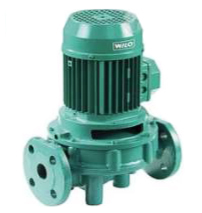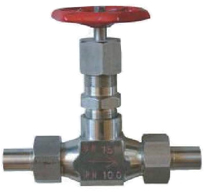What needs to be done to ensure long and trouble-free IHS service?
Individual Heat Substation (IHS) is a set of equipment installed at heat user’s hookup to district heating network or other source of heat.
IHS performs numerous functions; however, its principal task is to control the amount of heat delivered to the building in order to prevent heat overconsumption and waste of money.
Similarly to any technical devices, IHS equipment requires ongoing maintenance and repairs. As IHS must ensure continuous and fault-free operation throughout the heating period (if heating service only is provided) or throughout the year (if both heating and water supply services are provided), its reliable operation would guarantee not only cash savings, but also comfort in your homes.
A fault of the Individual Heat Substation could leave the whole building without heat or hot water. To prevent this, one needs to continuously perform scheduled maintenance of IHS, irrespective of its condition and length of service.
Maintenance means a set of procedures/works to keep equipment in working condition.
What Does IHS Maintenance Entail?
Different maintenance procedures are performed with different intervals. The main set of maintenance activities involves preparation of building and IHS systems for the heating period. Therefore, such works are implemented twice annually, before start of each heating period. There are, however, other types of maintenance: monthly, weekly, and even daily maintenance.
As a rule, the types of maintenance and their intervals are specified in the datasheet or operating instructions of respective machinery.
The majority of IHS technical devices are repairable items.
The key IHS components requiring maintenance are as follows:
PIPILINES. The IHS process equipment is interconnected by pipelines. Failure of the pipelines (except drain piping) will completely shut down the heating system and/or hot water supply system;

PUMPS. It is thanks to pumps that water flows in the heating system and hot water supply system. To ensure uninterrupted operation, the heating system circulating pumps (Fig.) should be installed in pairs. If the IHS circuit makes no provision for a standby pump, a spare one with identical parameters should be purchased. The pumps belong to the group of equipment, which could partially or completely stop operation of IHS and connected systems;

SHUT-OFF AND CONTROL DEVICES. Shut-off valves allow isolating heat using circuits to carry out routine or scheduled maintenance. Control equipment regulates the amount of heat carrier and its temperature in the heating and hot water supply systems. Failure of control equipment will not shut down IHS; however, it could lead to worsening comfort in the building (low air temperature) or overconsumption of heat;
METERING DEVICES. A faulty or past due validation check of heat or water meters cannot influence IHS operation but it is sure to impact your bills. Plan for conducting any validation checks of metering devices outside of the heating period;

CONTROL AND MEASURING EQUIPMENT. The control and measuring equipment includes devices for measuring heat carrier parameters (pressure gauges, thermometers) and sensors, which control operation of metering and control devices. Usually, if faulty, control and measuring equipment is replaced rather than repaired.
The annual maintenance involves the following activities:
- performance diagnostics of all IHS equipment;
- visual inspection of pipelines for any leaks and integrity, painting and applying heat insulation (where needed);
- testing of power lines;
- flushing of heat exchanger (if any);
- flushing of mud collector, cleaning of mesh filters;
- lubricating the bearings of pumps and control valves;
- IHS pressure testing to detect any leaks;
- checking the operation of signaling devices;
- replacing joint seals;
- testing for correct operation of the automation system by simulating emergency situations;
- tightening bolt joints.
The complete list of IHS maintenance works, their sequence, and requirements to IHS itself are governed by the Operational Regulations for Heat Installations and Networks (approved by the Order of the Ministry of Fuel and Energy of Ukraine of 14 February 2007, #71).
Who Should Perform IHS Maintenance?
If an Individual Heat Substation is kept on homeowners association (HOA) books, its maintenance should be borne either by joint owners or building manager.
Any works related to IHS maintenance should be performed by a competent specialist. Usually, the manufacturers of IHS equipment provide training for its maintenance personnel and issue certificates after completion of such training. Therefore, it is worthwhile to inquire about availability of relevant certificates from the company or specialists whom the HOA is contracting to provide maintenance of the heat substation.
After the IHS maintenance work is complete, an Acceptance Certificate for the completed work is drawn between the client (HOA) and the contractor. Acceptance of IHS after repair is conducted with participation of representatives from HOA, manager, and heat supply company.
What Can You Do Yourselves?
Always keep a complete set of technical documents for your IHS at hand. In particular, you might need the following documents:
- IHS design documents;
- balance sheet attribution certificate;
- technical specifications for IHS connection to heat networks;
- IHS datasheet with brief characteristics of heat supply systems;
- datasheets for IHS equipment units;
- heat and water meters validation certificate;
- contract for heat supply with energy supply organization;
- control and measuring instruments inventory, operational log of defects detected during visual inspection of devices and networks;
- commissioning report;
- operating instructions for IHS equipment;
- telephone numbers of IHS emergency maintenance services and heat supply organization.
For the convenience of IHS maintenance, its operating room should have a circuit diagram of the heat substation, and the heat substations piping should have the signs and legends with the heat carrier flow direction indicated.
Appoint a person in charge to monitor operation of the heat substation, take meter readings, and carry out daily IHS condition visual inspections. This person must undergo a safety briefing.
The daily IHS maintenance embraces ongoing visual and instrument monitoring of its operation, including the following:
- monitoring pressure by pressure gauges installed on piping (for this purpose, it is recommended to mark on the pressure gauges the maximum and minimum permissible pressure values);
- monitoring any unusual noises and prevent from excessive vibration of IHS components;
- check pump motors for overheating;
- monitor the heat carrier temperature in the pressure and return pipelines according to the temperature schedule, and the hot water temperature in the hot water supply circuit;
- monitor operation of fault light indicators on IHS equipment; and
- check for any leaks at joint points.
Once a month, a scheduled operational check of the system should be carried out by a competent specialist. Such a check may reveal the defects unnoticed by the person in charge. In addition, the specialists should conduct the following works:
- switch over the circulating pumps;
- check test of safety valves;
- check for correspondence of the heating system temperature regime to the ambient air temperature.
It is important to understand that IHS is a set of sophisticated systems, which are operating in close connection with each other. It is only the timely and competent maintenance that could help achieve their long and stable operation, bring the performance parameters into full conformity with standard values. Experience shows that competent IHS maintenance helps to significantly reduce the heating costs.
Monitor the condition of your IHS and it will serve you for a long time, keeping your homes comfortable and saving you money.









